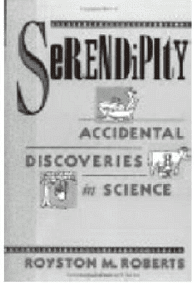Reading for IELTS Academic Practice Test- 33 PDF Download
Section - 1
(A) A decibel Hell
It’s not difficult for a person to encounter sound at levels that can cause adverse health effects. During a single day, people living in a typical urban environment can experience a wide range of sounds in many locations, even once-quiet locales have become polluted with noise. In fact, it’s difficult today to escape sound completely. In its 1999 Guidelines for predicting Community Noise, the World Health Organization (WHO) declared "Worldwide, noise-induced hearing impairment is the most prevalent irreversible occupational hazard, and it is estimated that 120 million people worldwide have disabling hearing difficulties." Growing evidence also points to many other health effects of too much volume.

Mark Stephenson, a Cincinnati, Ohio-based senior research audiologist at the National Institute for Occupational Safety and Health (NIOSH), says his agency’s definition of hazardous noise is sound that exceeds the time-weighted average of 85 dBA, meaning the average noise exposure measured over a typical eight-hour work day. Other measures and definitions are used for other purposes.
(B) Growing Volume
In the United States, about 30 million workers are exposed to hazardous sound levels on the job, according to NIOSH. Industries having a high number of workers exposed to bud sounds include construction, agriculture, mining, manufacturing, utilities, transportation, and the military. Noise in U.S industry is an extremely difficult problem to monitor, acknowledges Craig Moulton, a senior industrial hygienist for the Occupational Safety and Health Administration (OSHA). "Still," he says, "OSHA does require that any employer with workers overexposed to noise provide protection for those employees against the harmful effects of noise. Additionally, employers must implement a continuing, effective hearing conservation program as outlined in OSHA’s Noise Standard"
(C) Scary Sound Effects
Numerous scientific studies over the years have confirmed that exposure to certain levels of sound can damage hearing. Prolonged exposure can actually change the structure of the hair cells in the inner ear, resulting in hearing toss. It can also cause tinnitus, a ringing, roaring, buzzing, or clicking in the ears. NIOSH studies from the mid to late 1990s show that 90% of coal miners have hearing impairment by age 52—compared to 9% of the general population— and 70% of male metal/nonmetal miners will experience hearing impairment by age 60 (Stephenson notes that from adolescence onward, females tend to have better hearing than males). Neitzel says nearly half of all construction workers have some degree of hearing toss. "NIOSH research also reveals that by age twenty-five, the average carpenter’s hearing is equivalent to an otherwise healthy fifty-year-old male who hasn’t been exposed to noise," he says. William Luxford, medical director of the House Ear Clinic of St Vincent Medical Center in Los Angeles, points out one piece of good news: "It’s true that continuous noise exposure will lead to the continuation of hearing toss, but as soon as the exposure is stopped, the hearing toss stops. So a change in environment can improve a person’s hearing health."

Research is catching up with this anecdotal evidence. In the July 2001 issue of Pediatrics, researchers from the Centers for Disease Control and Prevention reported that, based on audiometric testing of 5,249 children as part of the Third National Health and Nutrition, Examination Survey, an estimated 12.5% of American children have noise-induced hearing threshold shifts — or dulled hearing — in one or both ears. Most children with noise-induced hearing threshold shifts have only limited hearing damage, but continued exposure to excessive noise can lead to difficulties with high-frequency sound discrimination. The report listed stereos, music concerts, toys (such as toy telephones and certain rattles), lawn mowers, and fireworks as producing potentially harmful sounds.
(D) Beyond the Ears
The effects of sound don’t stop with the ears. Nonauditory effects of noise exposure are those effects that don’t cause hearing toss but still can be measured, such as elevated blood pressure, toss of sleep, increased heart rate, cardiovascular constriction, labored breathing, and changes in brain chemistry. The nonauditory effects of noise were noted as early as 1930 in a study published by E.L. Smith and D.L. Laird in volume 2 of the Journal of the Acoustical Society of America. The results showed that exposure to noise caused stomach contractions in healthy human beings. Reports on noise’s nonauditory effects published since that pioneering study have been both contradictory and controversial in some areas. Bronzaft and the school principal persuaded the school board to have acoustical tile installed in the classrooms adjacent to the tracks. The Transit Authority also treated the tracks near the school to make them less noisy. A follow-up study published in the September 1981 issue of the Journal of Environmental Psychology found that children’s reading scores improved after these interventions were put in place.
(E) Fighting for Quiet
Anti-noise activists say that Europe and several countries in Asia are more advanced than the United States in terms of combating noise. "Population pressure has prompted Europe to move more quickly on the noise issue than the United States has," Hume says. In the European Union, countries with cities of at least 250,000 people are creating noise maps of those cities to help leaders determine noise pollution policies. Paris has already prepared its first noise maps. The map data, which must be finished by 2007, will be fed into computer models that will help test the sound impact of street designs or new buildings before construction begins. Activists in other countries say they too want the United States to play a more leading role on the noise issue. But as in other areas of environmental health, merely having a more powerful government agency in place that can set more regulations is not the ultimate answer, according to other experts. Bronzaft stresses that governments worldwide need to increase funding for noise research and do a better job coordinating their noise pollution efforts so they can establish health and environmental policies based on solid scientific research. "Governments have a responsibility to protect their citizens by curbing noise pollution," she says.
Questions 1-5: Complete the summary below. Choose NO MORE THAN TWO WORDS from the passage for each answer. Write your answers in boxes 1-5 on your answer sheet.
Nowadays it seems difficult for people to avoid the effects of living in a noisy world. Noise is the sound beyond average of _____1_____ referring to the agency’s definition. Scientific studies over the years from the mid to late 1990s have confirmed that exposure to certain levels of sound can cause damage ______2______ on certain senior age. From the testing of 5,249 children, those who are constantly exposed to excessive noise may have trouble in ______3_____ sound discrimination. The effects of sound don’t stop with the ears, exposure to noise may lead to unease of ____4_____ in healthy people. Europe has taken steps on the noise issue, big cities of over 250,000 people are creating _____5_____ to help creating noise pollution policies.
Questions 6-10: Look at the following researchers and the list of findings below. Match each researcher with the correct finding. Write the correct letter in boxes 6-10 on your answer sheet.
List of people or orgnisations
(a) WHO
(b) William Luxford (the House Ear Clinic),
(c) Carig Moulton (OSHA)
(d) Arline Bronzaft
(e) Centers for Disease Control and Prevention
Q.6. People can change the environment to improve hearing health.
Q.7. Government should continue the research on anti-noise researches with fund
Q.8. companies should be required to protect the employees to avoid noise
Q.9. Noise has posed effect on American children children's hearing ability
Q.10. noise has seriously affected human being where they live worldwide
Questions 11-13
Q.11. The board of schools built close to the tracks are convinced to
(a) moved the classrooms away from the noisy track
(b) regulated the track usage to a less extent
(c) utilised a special material into classroom buildings lessening the effect of outside noise
(d) oganised a team for a follow-up study
Q.12. In the European countries, the big cities’ research on noise focuses on
(a) How to record pollution details of the city on maps
(b) the impact of noise on population shift in the European cities
(c) how wide can a city be to avoid noise pollution
(d) helping the authorities better make a decision on management of the city
Q.13. What is the best title of paragraph 1?
(a) How people cope with noise pollutions
(b) the fight against the noise with the powerful technology
(c) The Effects of Living in a Noisy World
(d) The Effects of noise on children’s learning
Section - 2

(A) The term graffiti derives from the Italian graffio meaning 'scratching' and can be defined as uninvited markings or writing scratched or applied to objects, built structures and natural features. It is not a new phenomenon: examples can be found on ancient structures around the world, in some cases predating the Greeks and Romans. In such circumstances it has acquired invaluable historical and archaeological significance, providing a social history of life and events at that time. Graffiti is now a problem that has become pervasive, as a result of the availability of cheap and quick means of mark-making.
(B) It is usually considered a priority to remove graffiti as quickly as possible after it appears. This is for several reasons. The first is to prevent 'copy-cat' emulation which can occur rapidly once a clean surface is defaced. It may also be of a racist or otherwise offensive nature and many companies and councils have a policy of removing this type of graffiti within an hour or two of it being reported. Also, as paints, glues and inks dry out over time they can become increasingly difficult to remove and are usually best dealt with as soon as possible after the incident. Graffiti can also lead to more serious forms of vandalism and, ultimately, the deterioration of an area, contributing to social decline.

(C) Although graffiti may be regarded as an eyesore, any proposal to remove it from sensitive historic surfaces should be carefully considered: techniques designed for more robust or utilitarian surfaces may result in considerable damage. In the event of graffiti incidents, it is important that the owners of buildings or other structures and their consultants are aware of the approach they should take in dealing with the problem. The police should be informed as there may be other related attacks occurring locally. An incidence pattern can identify possible culprits, as can stylised signatures or nicknames, known as 'tags, which may already be familiar to local police. Photographs are useful to record graffiti incidents and may assist the police in bringing a prosecution. Such images are also required for insurance claims, and can be helpful to cleaning operatives, allowing them to see the problem area before arriving on site.

(D) There are a variety of methods that are used to remove graffiti. Broadly these divide between chemical and mechanical systems. Chemical preparations are based on dissolving the media; these solvents can range from water to potentially hazardous chemical 'cocktails'. Mechanical systems such as wire-brushing and grit-blasting attempt to abrade or chip the media from the surface. Care should be taken to comply with health and safety legislation with regard to the protection of both passers-by and any person carrying out the cleaning, operatives should follow product guidelines in terms of application and removal, and wear the appropriate protective equipment. Measures must be taken to ensure that run-off, aerial mists, drips and splashes do not threaten unprotected members of the public. When examining a graffiti incident it is important to assess the ability of the substrate to withstand the prescribed treatment. If there is any doubt regarding this, then small trial areas should be undertaken to assess the impact of more extensive treatment.
(E) A variety of preventive strategies can be adopted to combat a recurring problem of graffiti at a given site. As no two sites are the same, no one set of protection measures will be suitable for all situations. Each site must be looked at individually. Surveillance systems such as closed circuit television may also help. In cities and towns around the country, prominently placed cameras have been shown to reduce anti-social behaviour of all types including graffiti. Security patrols will also act as a deterrent to prevent recurring attacks. However, the cost of this may be too high for most situations. Physical barriers such as a wall, railings, doors or gates can be introduced to discourage unauthorised access to a vulnerable site. However, consideration has to be given to the impact measures have on the structure being protected. In the worst cases, they can be almost as damaging to the quality of the envfronment as the graffiti they prevent. In others, they might simply provide a new surface for graffiti.

(F) One of the most significant problems associated with graffiti removal is the need to remove it from surfaces that are repeatedly attacked. Under these circumstances the repeated removal of graffiti using even the most gentle methods will ultimately cause damage to the surface material. There may be situations where the preventive strategies mentioned above do not work or are not a viable proposition at a given site. Anti-graffiti coatings are usually applied by brush or spray leaving a thin veneer that essentially serves to isolate the graffiti from the surface.
(G) Removal of graffiti from a surface that has been treated in this way is much easier, usually using low-pressure water which reduces the possibility of damage. Depending on the type of barrier selected it may be necessary to reapply the coating after each graffiti removal exercise.
Questions 14-19: Reading Passage 2 has six paragraphs, A-G. Which paragraph contains the following information ? Write the correct letter, A-G ,in boxes 14-19 on your answer sheet. NB: You may use any letter more than once.
Q.14. why chemically cleaning graffiti may cause damage
Q.15. the benefit of a precautionary strategy on the gentle removal
Q.16. the damaging and accumulative impact of graffiti to the community
Q.17. the need for different preventive measures being taken to cope with graffiti
Q.18. a legal proposal made to the owner of building against graffiti
Q.19. the reasons of removing graffiti as soon as possible
Question 20-21: Choose TWO letters, A-E. Write your answers in boxes 20-21 on your answer sheet.
Which two statements are true concerning the removal of graffiti
(a) cocktail removal can be safer than water treatment
(b) small patch trial before applying large scale of removing
(c) Chemical treatments are the most expensive way of removing
(d) there are risks for both Chemical and medication method
(e) mechanical removals are much more applicable than Chemical treatments
Questions22-23: Choose TWO letters, A-E. Write your answers in boxes 22-23 on your answer sheet.
Which TWO of the following preventive measures against graffiti are mentioned effective in the passage?
(a) organise more anti graffiti movement in the city communities
(b) increase the police patrols on the street
(c) Build a new building with material repelling to water
(d) installing more visible security cameras
(e) Provide a whole new surface with chemical coat
Questions 24-27: Complete the Summary of the paragraphs of Reading Passage 2. Use NO MORE THAN TWO WORDS from the passage for each answer. Write your answers in boxes 24-27 on your answer sheet.
Q.24. Ancient graffiti is of significance and records the __________ of details life for that period.
Q.25. The police can recognize newly committed incidents of graffiti by the signature which is called _________ that they are familiar with
Q.26. Operatives ought to comply with relevant rules during the operation, and put on the suitable _________.
Q.27. Removal of graffiti from a new type of coating surface can be much convenient of using _________.
Section - 3
Serendipity: The Accidental Scientists

(A) A paradox lies close to the heart of scientific discovery. If you know just what you are looking for, finding it can hardly count as a discovery, since it was fully anticipated. But if, on the other hand, you have no notion of what you are looking for, you cannot know when you have found it, and discovery, as such, is out of the question. In the philosophy of science, these extremes map onto the purist forms of deductivism and inductivism: In the former, the outcome is supposed to be logically contained in the premises you start with; in the latter, you are recommended to start with no expectations whatsoever and see what turns up.
(B) As in so many things, the ideal position is widely supposed to reside somewhere in between these two impossible-to-realize extremes. You want to have a good enough idea of what you are looking for to be surprised when you find something else of value, and you want to be ignorant enough of your end point that you can entertain alternative outcomes. Scientific discovery should, therefore, have an accidental aspect, but not too much of one. Serendipity is a word that expresses a position something like that. It’s a fascinating word, and the late Robert King Merton—‘the father of the sociology of science’—liked it well enough to compose its biography, assisted by the French cultural historian Elinor Barber.
(C) Serendipity means a ‘happy accident’ or ‘pleasant surprise’; specifically, the accident of finding something good or useful without looking for it. The first noted use of ‘serendipity’ in the English language was by Horace Walpole (1717-1792). In a letter to Horace Mann (dated 28 January 1754) he said he formed it from the Persian fairy tale The Three Princes of Serendip, whose heroes ‘were always making discoveries, by accidents and sagacity, of things they were not in quest of’. The name stems from Serendip, an old name for Sri Lanka.

(D) Besides antiquarians, the other community that came to dwell on serendipity to say something important about their practice was that of scientists. Many scientists, including the Harvard physiologist Walter Cannon and, later, the British immunologist Peter Medawar, liked to emphasize how much of scientific discovery was unplanned and even accidental. One of Cannon’s favorite examples of such serendipity is Luigi Galvani’s observation of the twitching of dissected frogs’ legs, hanging from a copper wire, when they accidentally touched an iron railing, leading to the discovery of ‘galvanism’; another is Hans Christian Orsted’s discovery of electromagnetism when he unintentionally brought a current-carrying wire parallel to a magnetic needle. The context in which scientific serendipity was most contested and had its greatest resonance was that connected with the idea of planned science. The serendipitists were not all inhabitants of academic ivory towers. Two of the great early-20th-century American pioneers of industrial research—Willis Whitney and Irving Langmuir, both of General Electric—made much play of serendipity, in the course of arguing against overly rigid research planning.
(E) Yet what Cannon and Medawar took as a benign method, other scientists found incendiary. To say that science had a significant serendipitous aspect was taken by some as dangerous denigration. If scientific discovery were really accidental, then what was the special basis of expert authority?
(F) In this connection, the aphorism of choice came from no less an authority on scientific discovery than Louis Pasteur: "Chance favors the prepared mind." Accidents may happen, and things may turn up unplanned and unforeseen, as one is looking for something else, but the ability to notice such events, to see their potential bearing and meaning, to exploit then occurrence and make constructive use of them these are the results of systematic mental preparation. What seems like an accident is just another form of expertise. On closer inspection, it is insisted, accident dissolves into sagacity.
(G) In 1936, as a very young man, Merton wrote a seminal essay on "The Unanticipated Consequences of Purposive Social Action." It is, he argued, the nature of social action that what one intends is rarely what one gets: Intending to provide resources for buttressing Christian religion, the natural philosophers of the Scientific Revolution laid the groundwork for secularism; people wanting to be alone with nature in Yosemite Valley wind up crowding one another. We just don’t know enough—and we can never know enough— to ensure that the past is an adequate guide to the future: Uncertainty about outcomes, even of our best-laid plans, is endemic. All social action, including that undertaken with the best evidence and formulated according to the most rational criteria, is uncertain in its consequences.
Questions 28-33: Reading passage 3 has seven paragraphs, A-G Choose the correct heading for paragraphs A -F from the list of headings below. Write the correct number, i-x, in boxes 28-33 on your answer sheet.
List of headings
(i) The origin of serendipity
(ii) Horace Walpole’s fairy tale
(iii) Arguments against serendipity
(iv) Two basic knowledge in the paradox of scientific discovery
(v) The accidental evidences in and beyond science
(vi) organization’s movement Opposing against the authority
(vii) Accident and mental preparation
(viii) Planned research and anticipated outcome
(ix) The optimum balance between the two extremes
Q.28. Paragraph A
Q.29. Paragraph B
Q.30. Paragraph c
Q.31. Paragraph D
Q.32. Paragraph E
Q.33. Paragraph F
Questions 34-36: Complete the summary below, using NO MORE THAN TWO WORDS from the Reading Passage for each answer. Write your answers in boxes 34-36 on your answer sheet.
The word ‘serendipity’ was coined in the writing of ______34_______ to Horace Mann. He derived it from a ______35_____, the characters of which were always making fortunate discoveries by accident. The stem Serendip was a former name for ______36_______.
Questions 37-40: Choose the correct letter. A, B, c or D. Write the correct letter in boxes 37-40 on your answer sheet.
Q.37. What does ‘inductivism’ mean in paragraph A?
(a) observation without anticipation at the beginning
(b) Looking for what you want in the premise
(c) The expected discovery
(d) The map we pursued
Q.38. Scientific discovery should
(a) be much of accidental aspect
(b) be full of value
(c) be between the two exhemes
(d) be skeptical
Q.39. The writer mentions Luigi Galvani's observation to illustrate
(a) the cruelty of frog’s dissection
(b) the happy accident in scientific discovery
(c) the practice of scientists
(d) the rigid research planning
Q.40. Why does the writer mention the example in Yosemite Valley in paragraph G?
(a) To illustrate the importance of a systematic plan
(b) To illustrate there is an unpredictable reality towards expectation
(c) To illustrate the original anticipation
(d) To illustrate that intention of social action is totally meaningless














